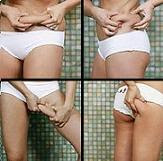Cleanses, fasting and elimination diets are often a good way to initiate a weight loss and detoxification regimen. By their very nature these regimens shift the metabolic balance of the body in favour of catabolism: decreased nutrient consumption, increased utilization of stored energy, and increased elimination. All of these regimens require a strict adherence to a particular choice of foods and/or beverages, and the vigilance needed to maintain this regimen teaches one to pay close attention to dietary habits. After, when the fast or cleanse has ended, it's easy to return to a broad selection of healthy foods and feel like you are really treating yourself. Another benefit of cleansing and fasting when starting a weight loss regimen are the fairly immediate and sometimes even dramatic results. This is quite often very encouraging and provides for a continued effort to follow through on one's weight loss goals. There are several different kinds of fasts or cleanses, and they can be broken down into three basic regimens: water fasting, juice fasting or eating a simple diet.
Water Fasting Water fasting will often promote the most immediate results weight loss results but should be avoided beyond two or three days, or if continued longer, should be medically supervised. If no nutrients other than water are consumed the body is forced to use up its available energy reserves. Glycogen, stored in muscle and liver tissue, is utilized first, but there is not enough to sustain the body and especially the brain, which requires 25% of the energy the body produces, for any great length of time. Once the glycogen is used up, the body begins breaking down stored fats (lipolysis) for energy. Without consuming any alkalizing substances the production of ketone bodies during lipolysis can lead to ketoacidosis. If the water fast continues the body will begin to break down the proteins in muscle tissue for the production of energy, leading to wasting and eventually, death.
Juice Fasting Juice fasting combines the benefits of water fasting, with the introduction of alkalizing substances that help to buffer the blood against acidosis. Further, juice fasting provides somewhat of a psychological buffer since something of substance is being consumed. Juice fasting can also protect against hypoglycemia, but if the juices are consumed in excess, they can promote transient states of hyperglycemia, which can rebound into hypoglycemia. The best way to avoid this is to dilute the juices in half with water, and consume the juice over a longer period of time, such as 1 litre of juice slowly sipped over an hour. And, as Mohandas Gandhi said, "one should drink one's food, and chew one's juice." Chewing the juice by swishing it around in the mouth ensures that it undergoes some initial digestion in the upper gastrointestinal tract. There are many different kinds of fruits and vegetables that can be juiced, but in order to avoid inducing reactive hypoglycemia, vegetable juices, which have a lower sugar content, are used in preference to fruit juices. Apples are to some extent an exception to this rule, as some of its long chain polysaccharides such as pectin slow it's digestion. Some of the most commonly juiced vegetables are carrot, beet, celery, cucumber and cabbage, but any number of other vegetables can be added, including herbs such as fresh cilantro, garlic, ginger, basil and parsley. Strong tasting vegetables or herbs should be used in lesser quantity in order to make the juice palatable. Also, if you plan on using any of the cruciferous vegetables (cabbage, broccoli) it's a good idea to include a little bit of ginger to prevent bloating and flatulence. A typical juice might be 4 large carrots, 1 beet, 1 medium cucumber, 2 stalks of celery, with parsley and basil to taste. Another juice that's a little sweeter is equal parts carrot and apple, with a finger of ginger thrown in for a little 'kick.' There are virtually endless combinations, allowing you to experiment with different tastes and colours. Typically, a juice fast can last anywhere from 3 to 7 days.
Fast Preparation Whether it's a juice fast or water fast, some measure of preparation is required before beginning them. If you are a drinker, a smoker or like your coffee, it's a good idea to wean these items out of your diet before going on the fast. Indulging in them while fasting corrupts the whole purpose of going on fast in the first place. If you take any prescription drugs it's a good idea to check with your doctor or pharmacist to see if the drugs you are taking must be taken with food. If you are diabetic, then water or juice fasting is not the best approach to cleansing. If the body is particularly toxic work your way into the fast slowly, consuming only raw fruits and vegetables the first day, a complete water fast for the next 2-3 days, followed by a juice fast over the next 4-6 days.
Effects of Fasting Water fasting and/or juice fasting are not the best approaches to undertake while continuing with your busy life. It's a time to go inward, to meditate, paint and play music, a time to remove the burden of everyday responsibility and allow true cleansing to occur. Some of the initial symptoms that can occur during the first 3 - 4 days of fasting include headaches, temperature sensitivity, fatigue and irritability. There may be withdrawal symptoms, such as a craving for bread or milk, which may be indicative of addictive food allergies, or a craving for other addictive substances, like tobacco and alcohol.
Subscribe to:
Post Comments (Atom)

No comments:
Post a Comment